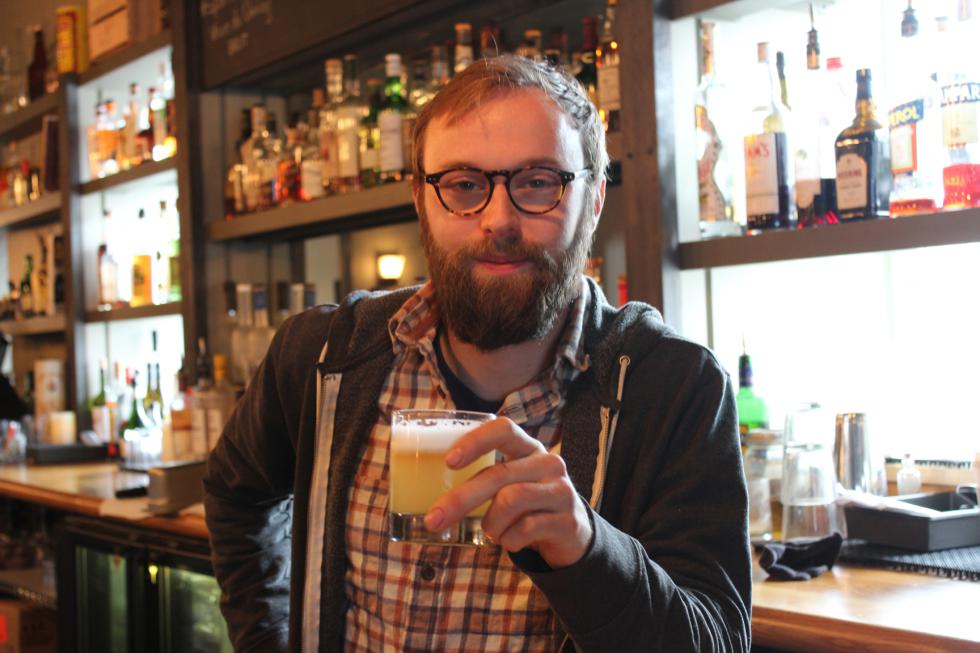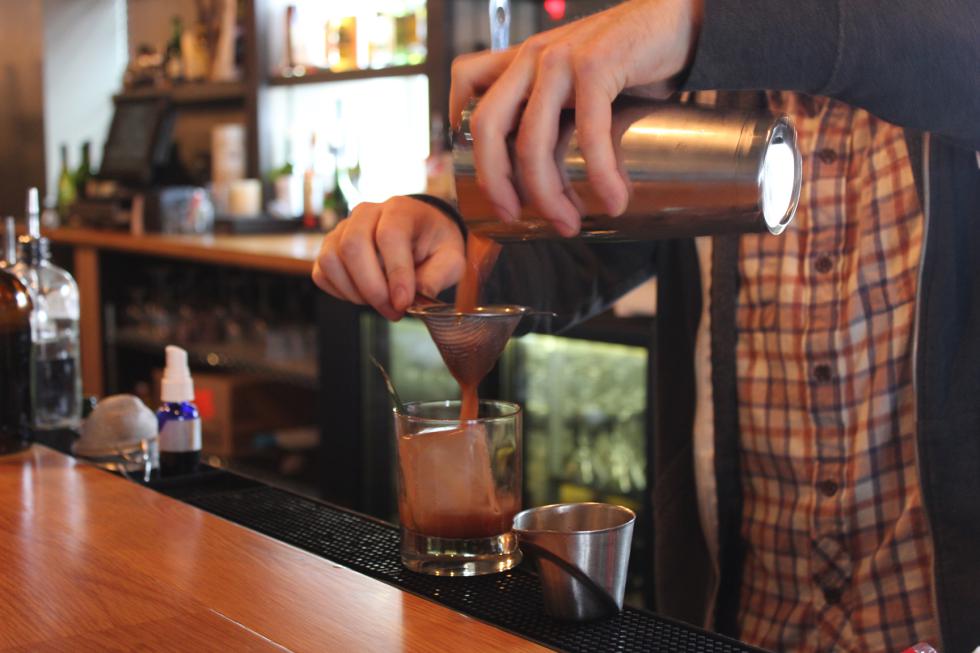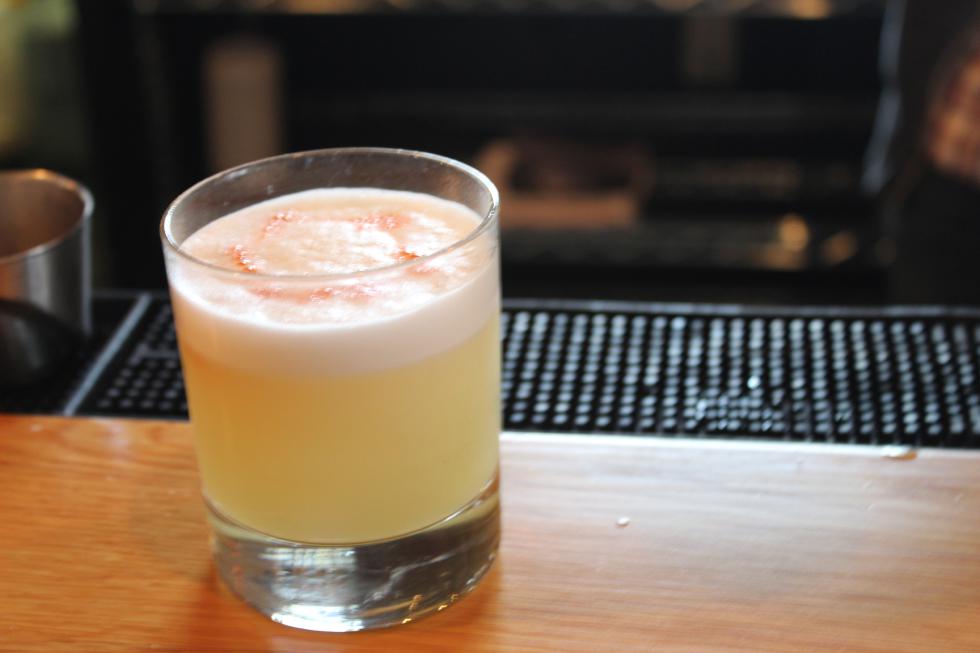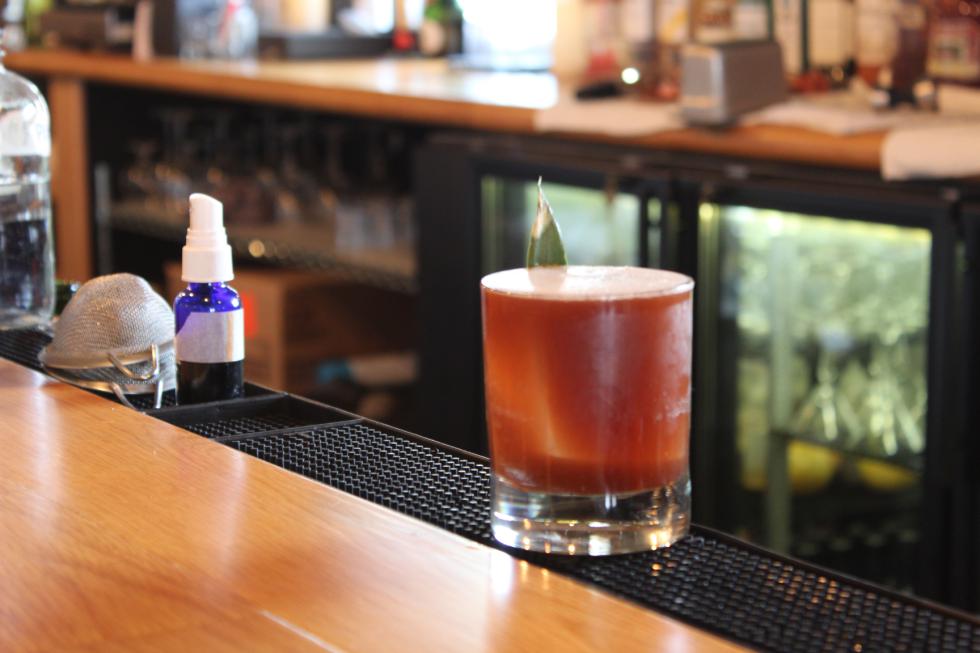A cocktail revolution that’s been percolating in major cities has finally made its way to Northampton in earnest: craft cocktails.
A craft cocktail is exactly what it sounds like — a craft unto itself.
It’s more than expensive alcoholic liquids poured into a glass. Between all the muddling, straining and spritzing, a craft cocktail requires step-by-step instructions for those making it for the first time. It requires a recipe, as it contains several carefully portioned ingredients. It likely includes a house-infused ingredient — bitters, for example, infused with cumin to add another layer to the cocktail.
And like most great inventions, the craft cocktail was born out of necessity.
Harry Harrison, head bartender at The Green Room in Northampton — a new place dedicated to top-notch, storied beverages — says the alcohol available during the speakeasy days of Prohibition was usually hastily made and tasted terrible. So, pairing it with distractingly yummy ingredients was the only way to stomach the poor-quality alcohol.
As I sit at the bar, which opened in November, Harrison spritzes absinthe from an atomizer into a goblet. The “rinse” technique has been around since the late 1800s, when bartenders would pour a liquor into a glass only to pour it out again, but the atomizer provides a less wasteful means of flavor-coating. A waste of good booze, after all, is a travesty. After the spritz, Harrison pours in a pisco, elderflower, lemon, allspice, and egg white mixture, decoratively placing in a few drops of house-made grenadine onto the beverage’s gorgeously foamy top. He’s actually using a medicine dropper to make this drink.
This cocktail, Judgment Day, is one of more than 40 drinks that grace The Green Room menu. Judgment Day wasn’t Harrison’s creation, but it was one that he and fellow Green Room mixologist Naureen Huq carefully plucked from a slew of sources. The menu, a mix of “Prohibition era and modern craft cocktails,” contains drinks created by bartenders from around the country and throughout time as well as house creations. On the menu, for example, Judgment Day is sourced: “PDT, NYC, 2008.” Meaning it was invented at PDT, or Please Don’t Tell, a popular speakeasy-style lounge in the East Village of New York City in 2008.
The “classic” section of the menu contains drinks dating back to any time from 1862 to 1960. The bar’s drink prices range from $9 to $13.
For Green Room cocktails, Harrison and Huq make a number of house infusions. The list includes an allspice dram, a Caribbean liqueur which they infuse with rum, allspice, berries, sugar, and water. They also have their own cinnamon bitters, cumin bitters, chocolate bourbon, maple rye, and of course, their own house grenadine and sour mix. As we chat, Harrison gestures to an exciting bay leaf liqueur busily infusing on the windowsill, which he’ll use in a drink on the pending spring menu.
When it comes to crafting a cocktail, Harrison says it’s all about the layering. An assortment of bitters 20 bottles-strong (and growing) helps him do just that. One drop of the house’s cumin bitters, for example, adds another flavor factor to a drink that Harrison says would “otherwise feel incomplete.”
A number of the drinks contain egg whites, which is worth a shot if you haven’t had the pleasure. It offers a delicious and nutritious foaminess. Egg whites are to cocktails what steamed milk is to cappuccinos.
Egg whites might be a hard sell at other bars, but not here.
“Having a place where the drink is the main focus, people are more apt to order a drink like that,” says Harrison.
With Harrison and Huq mixing up so many different beverages with so many ingredients, it can look a bit more like chemistry than bartending. Even though they can free-pour, which means pouring without measuring, with good results, Harrison says he likes to measure things out as frequently as possible.
“Consistency is the number-one priority,” says Harrison. “A quarter-ounce of something can make all the difference.”
Harrison says the craft cocktail movement consists of a “bunch of nerds” behind the bar who take themselves seriously, but at the same time not too seriously. He likens his style of bartending to cooking in a kitchen, except the kitchen is out in the middle of the dining room, where he can see firsthand how customers are responding to the drinks and adapt accordingly.
“We’re constantly nerding out over what else we can do,” says Harrison.
Take it from Madame Barfly, dear reader: A bartender who “nerds out” over his drink menu is someone you want making your cocktail.•
Contact Amanda Drane at adrane@valleyadvocate.com.







